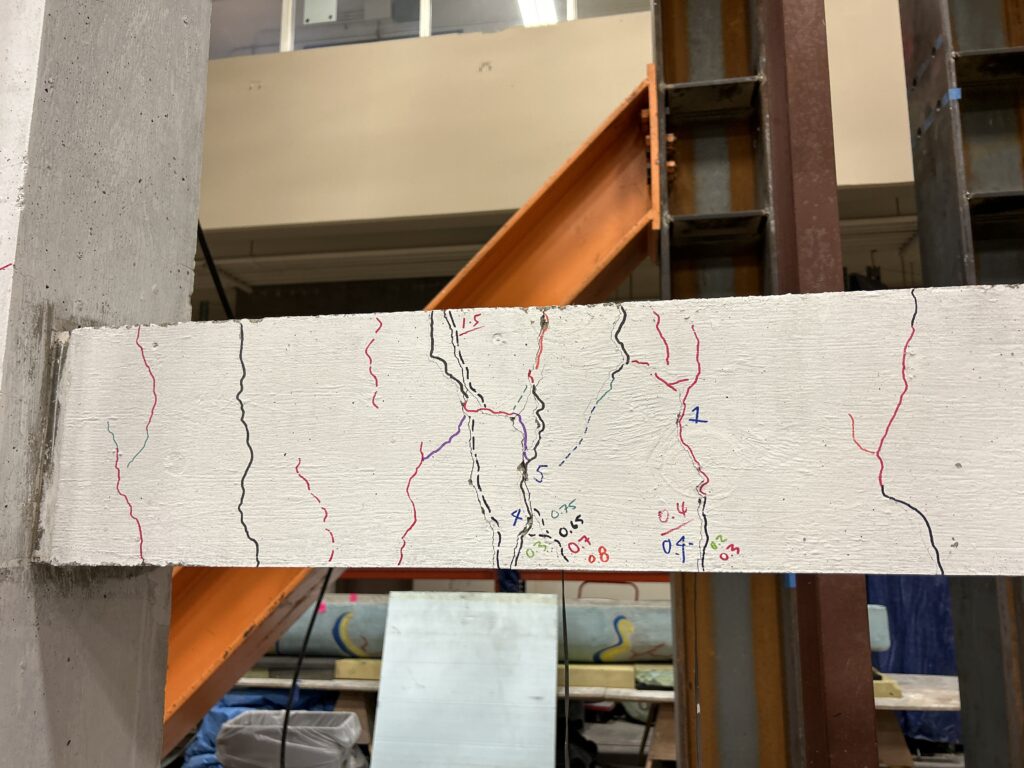Optical Frequency Domain Reflectometry (OFDR), a specialized branch of Fiber Optic Sensing (FOS), is emerging as a transformative approach in Structural Health Monitoring (SHM) of Reinforced Concrete (RC) structures. This research explores OFDR’s potential in post-earthquake damage assessment, contrasting its capabilities with traditional SHM methods. The study involved laboratory experiments on a two-bay, two-story RC moment frame at UC Berkeley’s structures laboratory, subjected to quasi-static cyclic loading up to a 3% drift ratio to mimic earthquake effects. Utilizing Distributed Fiber-Optic Sensing (DFOS), the research focused on monitoring the mechanical behavior and plastic hinge formation in RC beam-column connections under seismic loading conditions. The experiments revealed OFDR’s ability to accurately capture the internal strain distribution during the formation of plastic hinges. A novel correlation method was developed to link residual strain data with peak deformation strains, allowing for the inference of maximum strains experienced during seismic events from post-earthquake measurements. This approach has the potential to detect internal structural damages not visible externally. The study concludes that DFOS, particularly OFDR, significantly enhances our understanding of the behavior and integrity of RC structures post-earthquake, paving the way for more effective SHM strategies and ensuring structural safety in seismic zones.






Collaborator: NSF Smart & Connected Communities
Researchers: Han Liu, Matthew DeJong, Eyitayo Ademola Opabola
Publications: TBA!
Domains: Building Infrastructure
Capabilities: Laboratory Testing